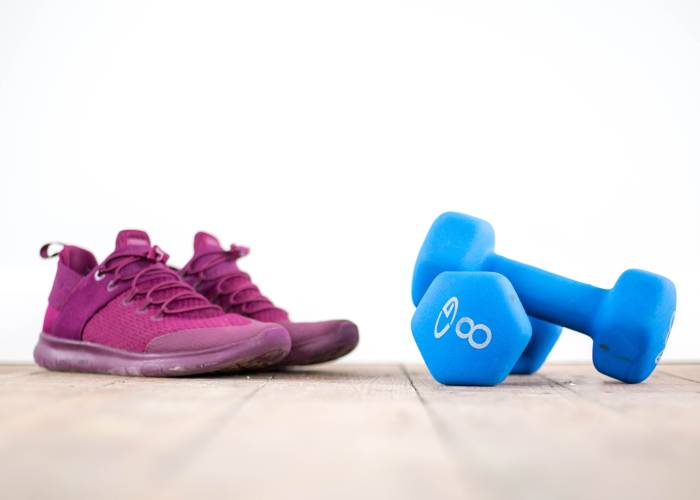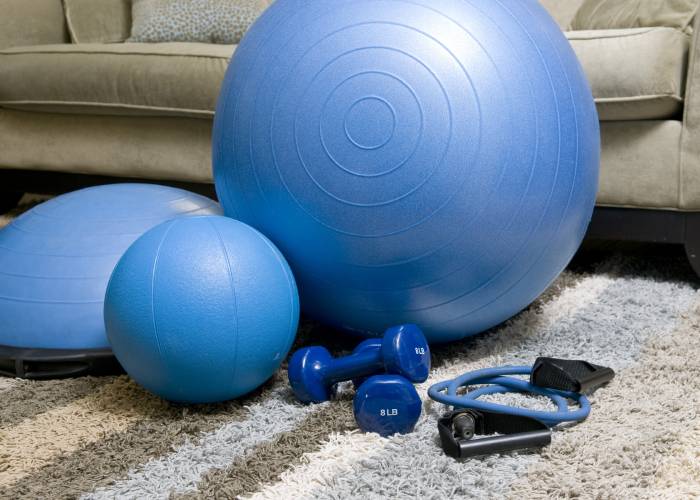People build home gyms for many reasons: they can exercise based on availability, install whatever equipment they like, and avoid undesirable social contact, to name a few.

However… the main issue is space. If you’re a regular at public gyms, there’s a good chance that all of your rooms are already used for something else. Plus, not all of us have a large house in the first place.
So, we’ll be teaching you how to build a functional home gym in small spaces. Read on!
Measure Your Space
Of course, the first step to building a home gym is to measure how much space you have. This will determine how much equipment you can fit, how you will store them, and if you need to rearrange certain items in your house.
For example, many people build their home gym in their garage. In this case, you have to consider whether your car can still fit in there or you have to park outside. Additionally, garages usually contain tools and storage containers, so you have to work around those as well.
It’s essential to research the measurements of the equipment you’re buying to ensure that everything fits.
For example, one of these could be a standing punching bag, which takes up more vertical space than horizontal. You could also put it away in a corner after using it, creating extra room for other equipment.
You can even put tape on the floor to envision the arrangement of your equipment.
Get Smaller Pieces Of Equipment
We recommend buying equipment that doesn’t take up too much floor space in a small area. This way, you can exercise comfortably.
You can opt for smaller versions of large gym equipment. For example, you can buy a squat rack instead of a power cage for bodybuilding, a stationary bike instead of a treadmill for cardio, and so on.
You can save even more space if you get the portable version of these pieces of equipment. Once you’re done working out, you can fold them for easy storage.
However, we recommend buying high-quality ones as portable equipment tends to be more prone to damage.
Suppose your space is really limited and can’t fit any of the equipment we mentioned. In that case, you can use smaller items, such as a yoga mat, jump rope, dumbbells, resistance bands, and an ab roller.

Make Room For Gym Accessories
Apart from the equipment, you should also consider the spacing of necessary gym accessories, such as storage racks for your weights, yoga mat, and the like.
Of course, you can always put these somewhere in your living room or bedroom if you’re not bothered by equipment in living spaces.
However, you should always make room for windows, fans, and heaters in your home gym. The last thing you want is an uncomfortable exercise from an unregulated temperature.
You can even try adding a large mirror to your home gym, making the room appear larger than it actually is. Plus, you can use it to check your form during exercise.
Protect Your Floors And Double-Check Your Walls
If you’re using heavy equipment, ensure that your floor is safe from the impact. For example, the cement floor in your garage can still crack if you repeatedly drop a barbell on it.
If you lift heavy weights, you can protect your floor by installing a lifting platform (see image below). Apart from absorbing the impact, the platform makes lifting safer by providing an even, hard surface that acts as a solid base.
You should still cover your floor with rubber mats even if you’re not lifting. These mats will put less stress on your knees, calves, and ankles if you’re doing a HIIT workout or making a lot of jumping motions.
Protecting your floors also means reducing impact noise, which you should consider if you live with others or have downstairs neighbours.
Meanwhile, if you’re using wall-mounted equipment, you should double-check the construction of your walls to ensure they won’t be damaged. You can consult an expert like a carpenter to confirm if your walls can handle the weight.
The Bottom Line
You don’t need to live in a huge mansion to accommodate your needs. With a bit of give-and-take, you can transform the smallest rooms into a functional home gym.
Plus, you don’t have to buy everything right away. You can start out with one piece of equipment, then add to it the next time you save some money.
We hope our guide helped you build your home gym despite the small space. Have fun working out in the comfort of your own home!




